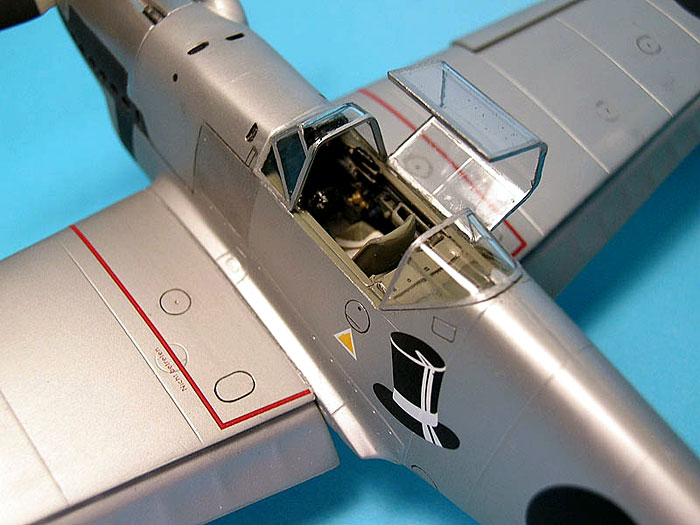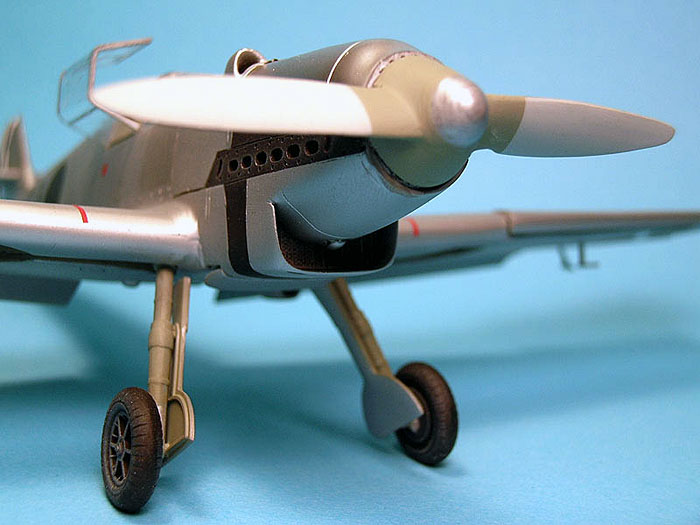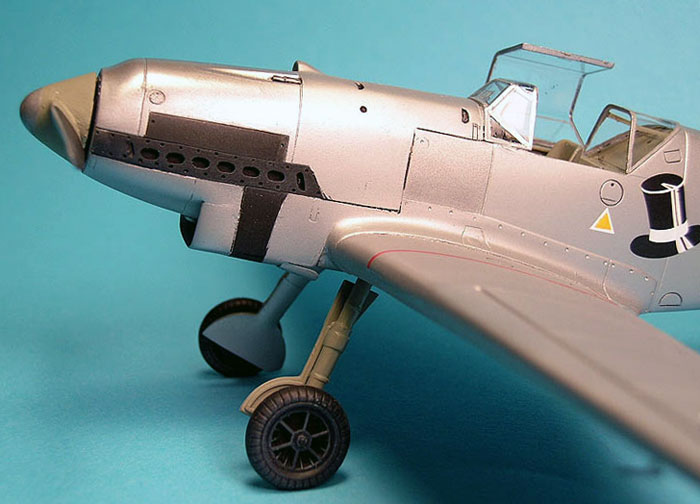|
Classic Airframes' 1/48
scale
Early Messerschmitt Bf 109
by Lynn Ritger
|
 |
|
Messerschmitt
Bf 109A |

Classic
Airframes' 1/48 scale Messerschmitt Bf 109 A is available online from Squadron
Conceived in 1934 as a groundbreaking fighter, the first
Messerschmitt Bf 109 prototype flew on 28 May 1935 and remained in
continuous production for the next ten years. Following a
breathtaking aerobatics display in the fly-off competition by
Dipl.Ing. Hermann Würster in the Bf 109V2, the aircraft was selected
by the RLM as the primary fighter for the reborn Luftwaffe, and mass
production orders were immediately placed. The rest, as they say, is
history.
Considering the popularity of the Bf 109 as a modeling subject, the
early variants have been surprisingly poorly represented in kit
form. Karo-As released a reasonable vacuform kit many years ago, and
of course Hobbycraft brought us their take on the Jumo-engined
variants. Unfortunately, the Hobbycraft kit has more issues than
National Geographic, with the nose of the aircraft being far too
bulky, angled wrong, vents misplaced, gun troughs too far forward,
exhausts too small… you get the idea.

As has happened time and again, Jules Bringuier of Classic Airframes
saw the potential to provide a unique and interesting subject to his
fellow modelers, but his choice of the Bf 109 has brought it’s own
unique challenges. EVERYONE knows what a Messerschmitt looks like,
and much like their “boffin” counterparts with the Spitfire, many
Messerschmitt enthusiasts are not exactly shy about making their
opinions known regarding the accuracy of available kits, or lack
thereof. (What? Why is everyone looking at me? ) Much time and
effort was spent in refining the shapes and details of this kit to
make it as accurate as current info will allow.
The result is not just the absolute best Jumo-engined Messerschmitt
kit on the market; it easily takes place alongside the Hasegawa and
Tamiya kits in terms of detail and value for the money. Upon opening
the box, you are greeted not just by the kit plastic, but also a bag
chock full’o’resin bits including a full resin cockpit,
well-sculpted wheel well inserts, nicely done mainwheels, a pair of
leading edge slats, an instrument panel backing plate with integral
gunsight (Genius!), a resin “wooden” prop, and not one, but TWO full
upper cowlings. One cowling is completely smooth, while the other
has the more familiar three cooling holes in the nose and extra
cooling slots on the side.

There is also an Eduard photoetch fret featuring early and late
gear cover doors, instrument panel, seat belts, cowling faceplate
with cooling holes, and radiator inlet grille.
And as they say on TV here in the States, “But wait… there’s MORE!”
The decal sheet is easily one of the high points of the kit.
Markings are included for five aircraft:
-
Bf 109V-6 D-IALY (the sixth
prototype, in overall RLM 63 or L40/52)
-
Bf 109A “6-3” (the first
production Bf 109 to enter Spanish Nationalist service in early
1937, in an overall silver scheme)
-
Bf 109A “6-10” (flown by Günther
Lützow, in an overall silver scheme)
-
Bf 109B-1 D-IEKS (a standard
Luftwaffe B-1 in 70/71/65, as coded before delivery to the
Luftwaffe)
-
Bf 109B-1 “white 5” of JG 132
“Richthofen”
As of this writing, markings are also present on the sheet for
the Bf 109V-3 coded “6-1”, but the kit does not have the proper
upper cowling, windscreen, or oil cooler for this aircraft.
The kit itself goes together quite well. Much of the assembly
sequence will be familiar to anyone who’s built a Hasegawa Emil
previously, but as there are no locating pins, care will need to be
taken with the stabilizer alignment and the various bits which
comprise the lower cowling and chin intake assembly. Dry fitting and
careful trimming will result in a decent fit in this area.
The wingtips are integral with the upper wing halves, and some
filing along the mating surfaces of the outer wings will be
necessary to properly square off those areas so that the lower wing
fits flush against the upper.
The resin wheel well inserts have very small pour stubs on them,
a refreshing change, and the cockpit has a fairly substantial chunk
of resin along the floor which will need to be removed.
Take care with the resin prop as well; on my preproduction
example, the resin prop base diameter was too small in comparison to
the cowling, so the plastic prop was cleaned up and used.

Every single control surface is separate, which is a first for a
1/48 Bf 109 kit so far as I am aware, and this first release also
features the longer slats of the early A and B-1 aircraft which did
not have wing guns fitted. I am also extremely pleased to report
that the spare cowling in this kit can be grafted onto the old
Hobbycraft kit with a minimum of fuss, dramatically improving the
appearance of that old chestnut.
The canopy is thin and crisply molded in three sections, as is the
norm for everyone (except Hobbycraft, apparently).
One small concession to production considerations is the lack of
the earlier, steeper windscreen… I’m sure some enterprising vacuform
canopy maker will step forward with a new canopy, but the
differences between them are slight enough that 99.44% of people
will not notice the difference, and the kit windscreen fits like a
glove in any event.
Overall, Jules and Classic Airframes have a lot to be proud of
with this release.
Considering the amount of resin bits and photoetch, the suggested
retail of $39.95 is a bargain when compared to a Hasegawa Emil with
an equivalent amount of aftermarket resin and photoetch details. The
history, markings, and configurations of the early 109s are finally
being examined in more detail, and this new series of early Bf 109
kits will fill a very large void in any WW2 or Luftwaffe
enthusiast’s model collection, and will be an enjoyable build to
boot.
Click
the thumbnails below to view larger images:
Modelling the F4U
Corsair
Osprey Modelling 24 |
|
|
|
|
Author: Brett Green
US Price: $17.99
UK Price: £12.99
Publisher:
Osprey Publishing
Publish Date: October 10, 2005
Details: 80 pages; ISBN: 1841768804 |
|
|
Model and Images Copyright © 2006
by Lynn Ritger
Page Created 11 January, 2006
Last Updated
21 February, 2007
Back to
HyperScale Main Page |
Home
| What's New |
Features |
Gallery |
Reviews |
Reference |
Forum |
Search